13 Shade-Loving Plants That Can Be Added in Autumn
As the season changes, shaded garden spots may seem like a challenge, but they are far from it. There are plenty of plants that flourish in the low light of autumn, offering lush greenery and striking hues. These plants are perfect for those areas that do not receive direct sunlight but still need something to brighten them up. By choosing the right plants, you can turn those shaded corners into vibrant focal points.
This post may contain affiliate links, which helps keep this content free. Please read our disclosure for more info.
Hostas
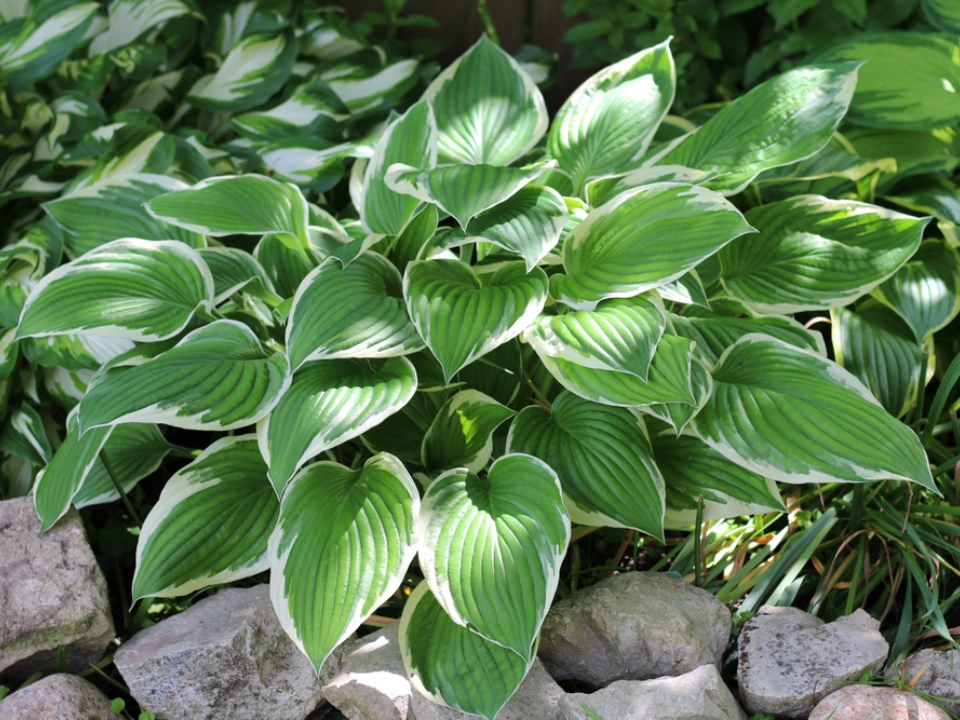
Hostas are among the most popular shade-loving plants, known for their vibrant foliage and ability to thrive in low-light environments. These perennials come in a variety of sizes and colors, from deep green to variegated hues, making them perfect for adding texture to shaded areas. Hostas prefer moist, well-drained soil and can tolerate a range of temperatures, which makes them ideal for autumn planting. They also produce delicate flowers in the summer, which can add an extra layer of beauty to your garden.
In the fall, Hostas begin to transition, often showing golden or yellow tones as their foliage changes. They are a low-maintenance option for gardeners looking to fill shade spots without too much effort. Hostas are also excellent for ground cover, spreading slowly and filling in gaps between other plants. Their versatility and ease of care make them a must-have in shaded gardens.
Astilbes
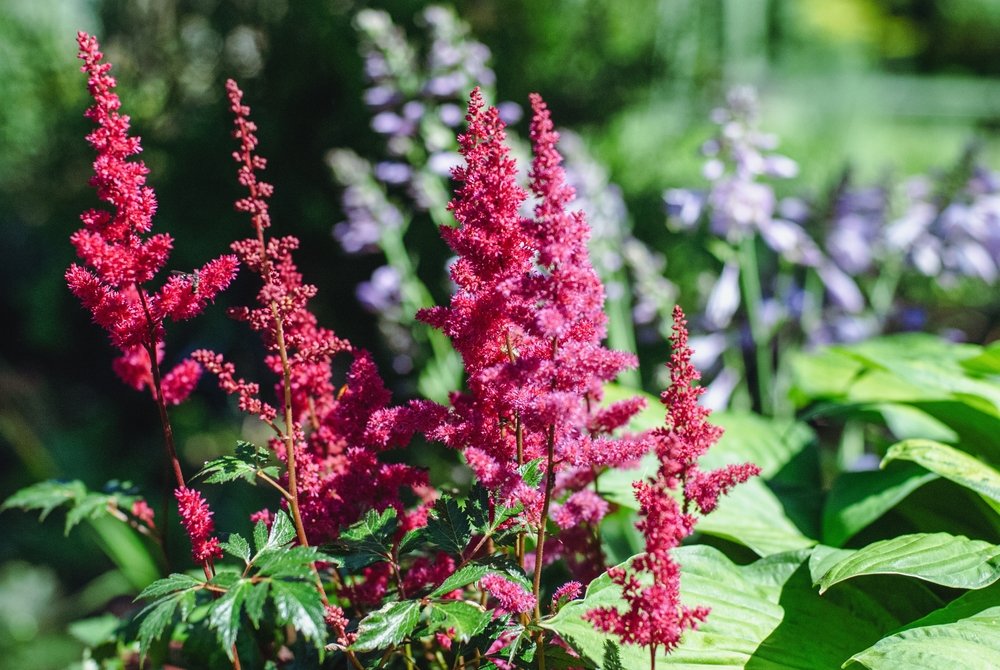
Astilbes are shade-loving plants that bring color and texture to any garden, especially in the autumn months. Known for their feathery, plume-like flowers, these plants bloom in shades of pink, red, and white, adding a soft and graceful look to shaded areas. They thrive in moist, well-drained soil and require regular watering to keep their roots hydrated. Astilbes are ideal for creating a beautiful contrast in areas where other plants might struggle to grow.
During the fall, Astilbes’ foliage begins to change, turning shades of bronze, red, and purple, offering another layer of interest to your garden. These plants are great for planting near water features or under trees, where the light is filtered and the soil stays consistently moist. They are relatively low-maintenance, only requiring a light pruning once the flowers fade. Astilbes can be planted in clumps to make a striking statement in any shaded corner of your garden.
Heuchera (Coral Bells)
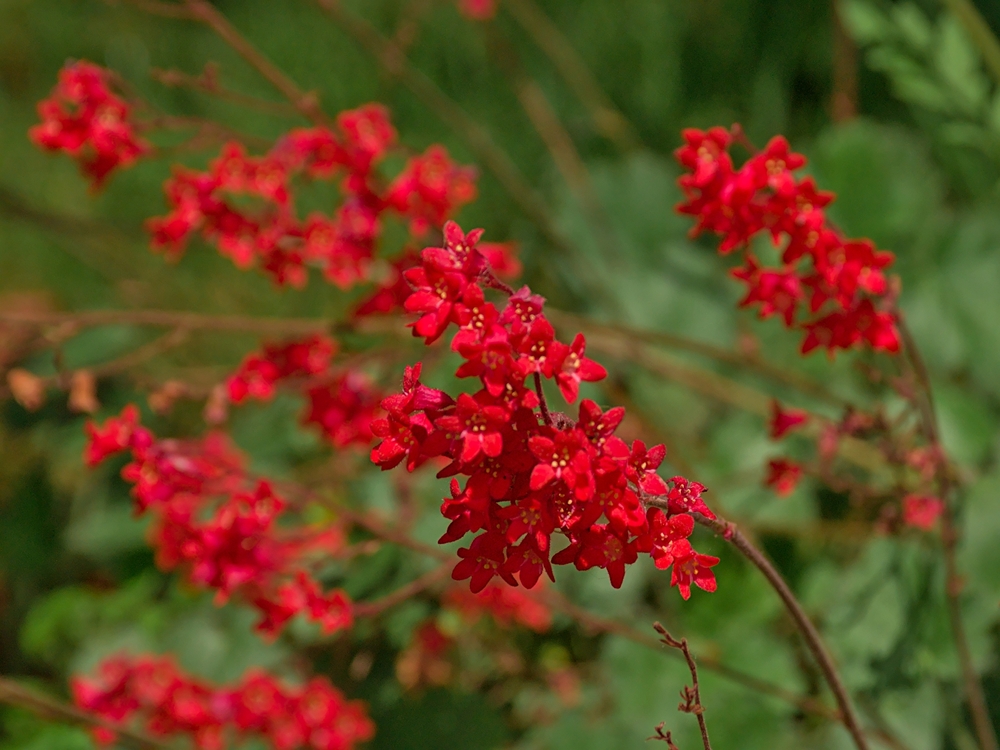
Heuchera, or Coral Bells, is a great shade-loving plant that can add vibrant color to your garden year-round. Known for their stunning foliage in shades of red, purple, silver, and green, Heucheras can brighten even the shadiest spots. They are highly adaptable, tolerating both moist and dry soil, and can grow in part to full shade. These plants are perfect for adding contrast and texture under trees or along shaded walkways.
In autumn, Heuchera foliage becomes even more dramatic, with colors deepening to create a striking fall display. Their small, bell-shaped flowers, which are often pink or white, can bloom throughout the season, attracting pollinators like bees and hummingbirds. Heuchera thrives in well-drained soil and requires little care once established. Its ability to thrive in shade while offering vibrant colors makes it a standout choice for fall gardens.
Japanese Painted Fern (Athyrium niponicum)
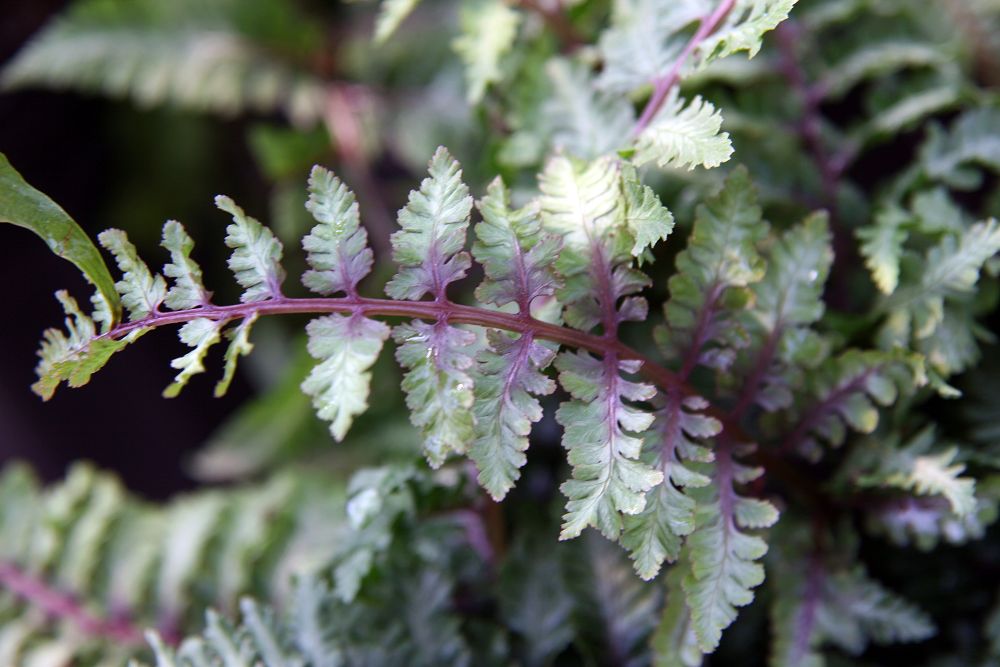
The Japanese Painted Fern is an elegant, shade-loving plant known for its unique, silvery foliage that adds a touch of sophistication to any garden. Its fronds have a beautiful, metallic sheen with hints of purple, making it an eye-catching addition to shaded spots. Japanese Painted Ferns grow well in moist, well-drained soil and are ideal for areas with indirect or filtered light. They thrive in cool, shaded environments, making them perfect for autumn planting.
As the cooler months arrive, the fern’s fronds turn deeper shades of red and burgundy, offering a dramatic contrast to the rest of your garden. This plant does not require much care beyond occasional watering and the removal of dead fronds. It is also highly adaptable and can tolerate a range of soil conditions, though it does best in rich, loamy soil. The Japanese Painted Fern is an excellent choice for shaded gardens, adding both texture and color.
Bleeding Heart (Dicentra Spectabilis)
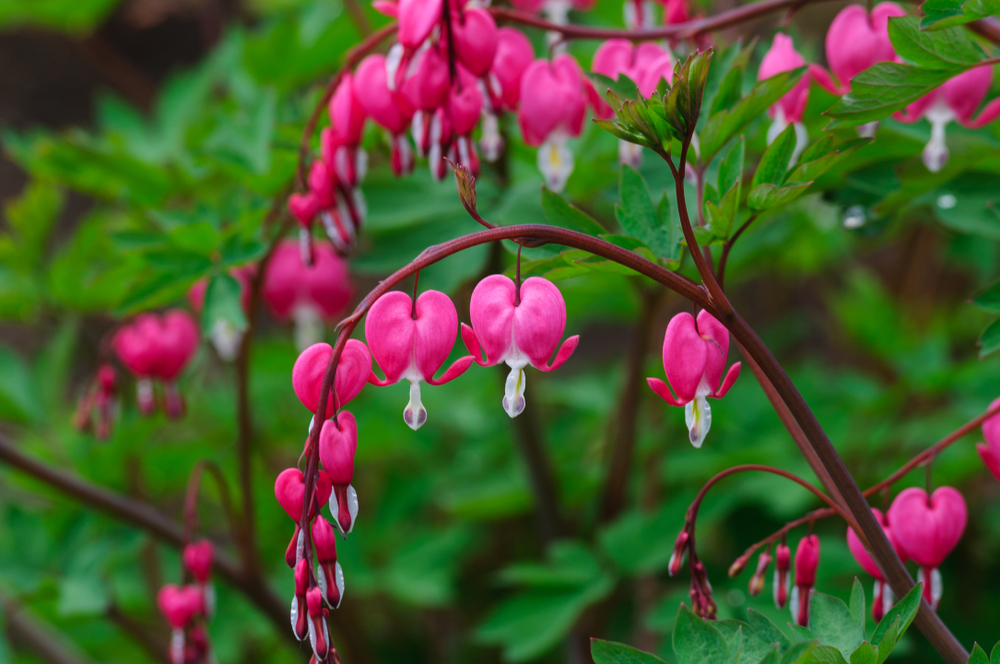
Bleeding Heart is a classic shade-loving perennial that blooms in the spring, but its foliage continues to provide beauty through the autumn months. The plant’s distinctive heart-shaped flowers, typically pink or white, are a highlight in shaded areas. Bleeding Heart prefers moist, well-drained soil and thrives in partial to full shade. This plant is a great addition to a woodland garden or along shaded garden paths.
In autumn, Bleeding Heart’s foliage begins to die back, but its feathery leaves still provide interest in shaded corners. While the flowers fade, the plant’s delicate form and lacy texture continue to enhance garden beds. Bleeding Heart requires little maintenance, only needing to be cut back in early spring. It’s a low-maintenance, reliable choice for adding a touch of elegance to shaded spots in the garden.
Foamflower (Tiarella)

Foamflower, or Tiarella, is a stunning shade-loving plant known for its dense foliage and delicate white flowers. Its leaves are often deeply lobed, with a striking dark green hue that can develop red or bronze tones in the fall. Foamflower thrives in well-drained, moist soil and grows best in areas with part to full shade. It’s a low-growing plant, perfect for filling in the front of garden beds or as ground cover.
During autumn, Foamflower’s foliage becomes even more vibrant, turning shades of red and orange, adding extra color to shady areas. The tiny white flowers appear in the spring but can last through early summer, adding a soft texture to your garden. Foamflower is a great plant for woodland gardens or shaded patios, and its compact size makes it a versatile choice for smaller spaces. Once established, it requires minimal care, making it ideal for gardeners looking for a low-maintenance plant.
Toad Lily (Tricyrtis)
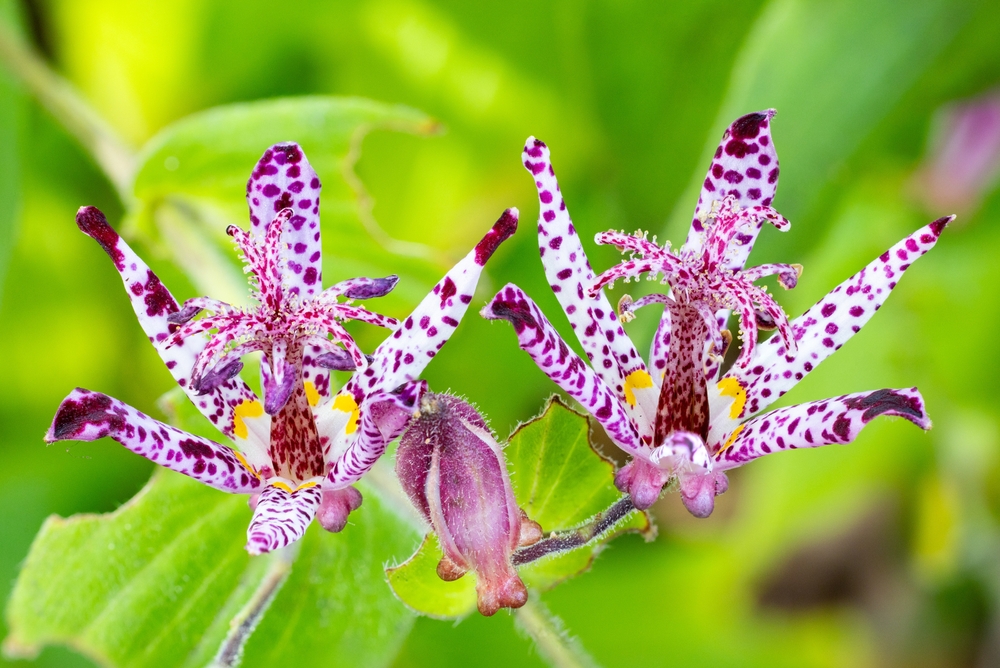
Toad Lily is a shade-loving plant known for its unique, orchid-like flowers that bloom in the fall, adding an exotic touch to your garden. These flowers can range from purple to white with intricate spots and markings, making them stand out in shaded corners. Toad Lilies thrive in moist, well-drained soil and prefer a location with part to full shade. They are perfect for planting in woodland gardens or near water features.
As the weather cools in autumn, Toad Lilies reach their peak bloom, creating a late-season spectacle in your garden. Their flowers attract bees and butterflies, providing some late-season pollinator support. Toad Lilies are relatively low-maintenance, requiring only occasional watering and occasional deadheading. Their unique flowers and late-season bloom make them a delightful addition to shaded gardens.
Lungwort (Pulmonaria)
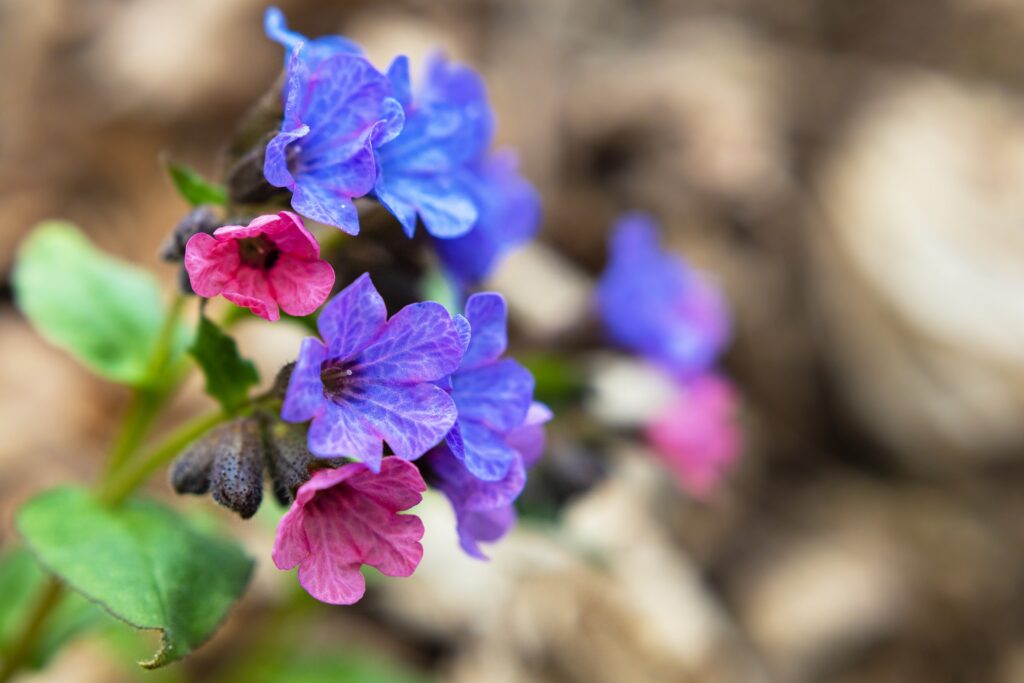
Lungwort is a shade-loving perennial that thrives in cool, moist soil, making it an excellent choice for autumn gardens. Its speckled foliage, which often features silver spots, provides year-round interest in shaded areas. Lungwort produces beautiful blue, pink, or white flowers in early spring, but its leaves remain attractive throughout the fall. It is perfect for under trees or along garden paths, where it can tolerate both dry and moist conditions.
During the autumn months, Lungwort’s foliage changes, with the leaves turning a deep green and red. This plant is known for being tough and resilient, making it suitable for a variety of garden conditions. It also acts as an effective ground cover, helping to reduce weeds in shaded areas. Lungwort requires little care beyond regular watering and occasional removal of dead leaves.
Caladium
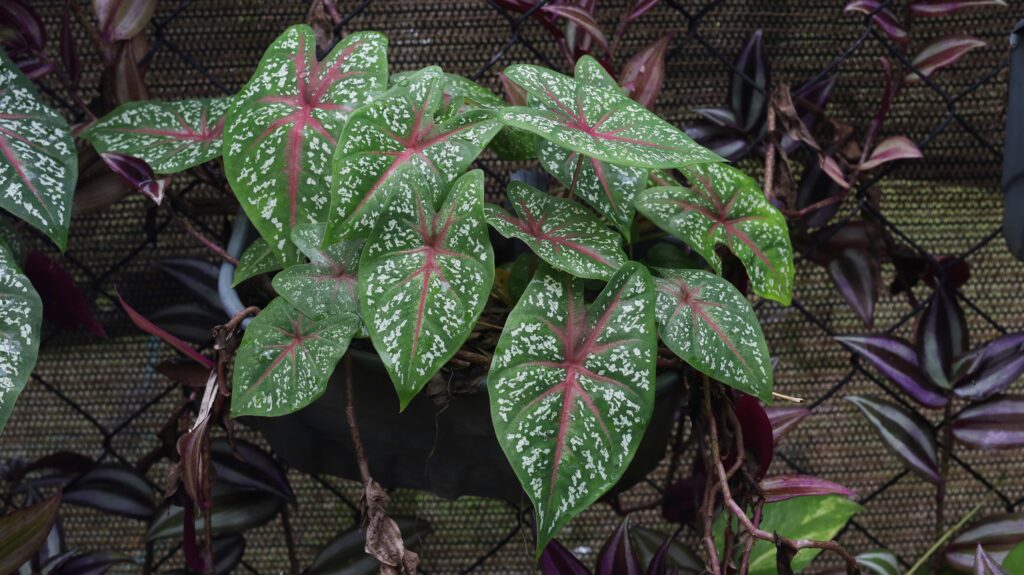
Caladium is an ideal shade-loving plant for adding bold, colorful foliage to your garden. Known for its heart-shaped leaves in vibrant colors of red, pink, white, and green, Caladium thrives in moist, well-drained soil with part to full shade. These plants do well in garden beds, containers, or hanging baskets, making them versatile for different garden setups. Caladiums are particularly popular for their ability to brighten up dark, shaded areas.
In autumn, the foliage of Caladiums begins to fade, but the vibrant colors they offer throughout the summer remain in your memory. These plants are perfect for creating visual interest in areas that do not get much sunlight. Caladiums are relatively easy to care for, requiring regular watering and occasional fertilizing. For gardeners looking to add a pop of color to shaded spaces, Caladium is a great option.
Brunnera (False Forget-Me-Not)
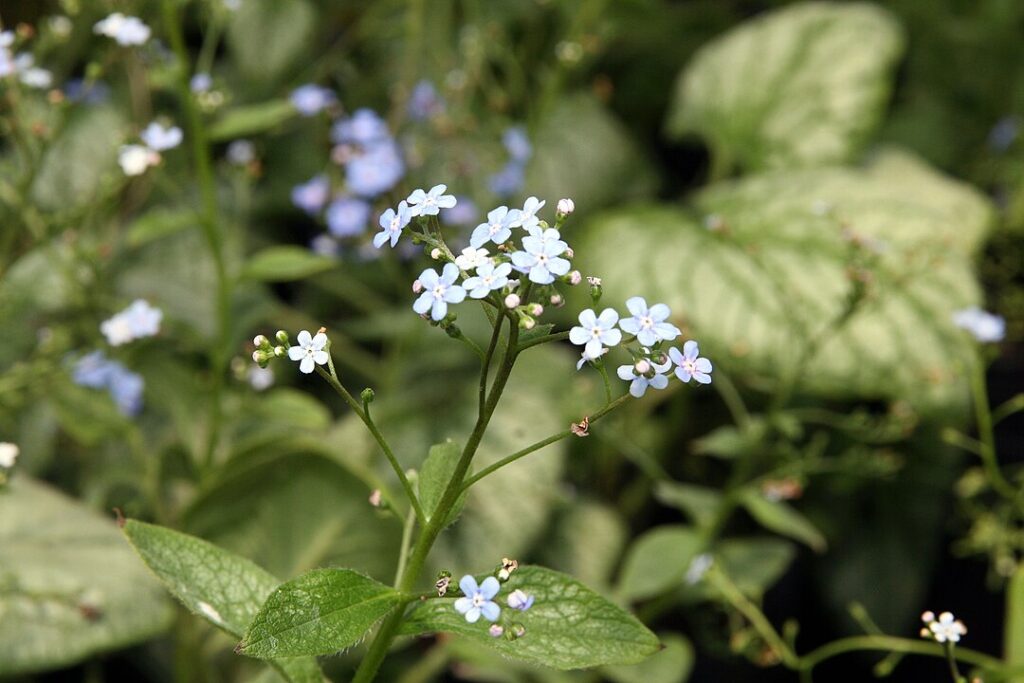
Brunnera, also known as False Forget-Me-Not, is a wonderful shade-loving perennial that brings small, sky-blue flowers to shady areas in the spring. This plant is often used for ground cover, with heart-shaped leaves that are often veined with silver, adding texture to garden beds. Brunnera thrives in moist, well-drained soil and can grow in areas with full to part shade. It is a low-maintenance plant that continues to provide beauty throughout the growing season.
By autumn, Brunnera’s foliage turns yellow and fades back, but it remains a reliable ground cover that stays lush until the colder months. This plant can be used to fill in the gaps in shaded areas, providing a soft, trailing effect. It is great for creating a calming atmosphere under trees or along shaded paths. Brunnera requires minimal care, making it a great choice for beginner gardeners or anyone looking for an easy-care, shade-loving plant.
Japanese Forest Grass (Hakonechloa macra)
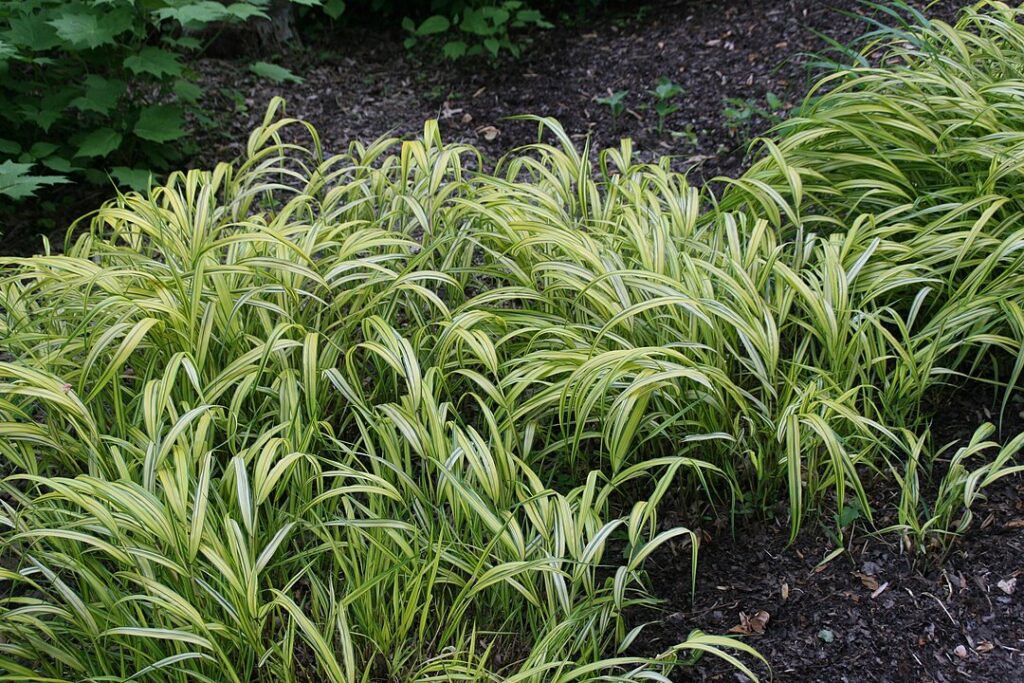
Japanese Forest Grass is a beautiful shade-loving plant known for its graceful, arching foliage. It grows in dense clumps, with vibrant green or gold leaves that wave gently in the breeze, adding movement and texture to shaded areas. This plant thrives in moist, well-drained soil and can grow in part to full shade, making it perfect for areas under trees or near water features. Japanese Forest Grass adds elegance and beauty to any garden, especially during the autumn months.
In the fall, Japanese Forest Grass transitions to shades of yellow, gold, and red, creating a stunning visual contrast in shaded areas. It is a slow-growing grass that can fill spaces without overwhelming other plants. The plant’s ability to adapt to different soil types and conditions makes it ideal for low-maintenance gardens. Japanese Forest Grass is perfect for adding depth and texture to your fall garden, and it pairs well with other shade-loving plants.
Snowdrops (Galanthus nivalis)
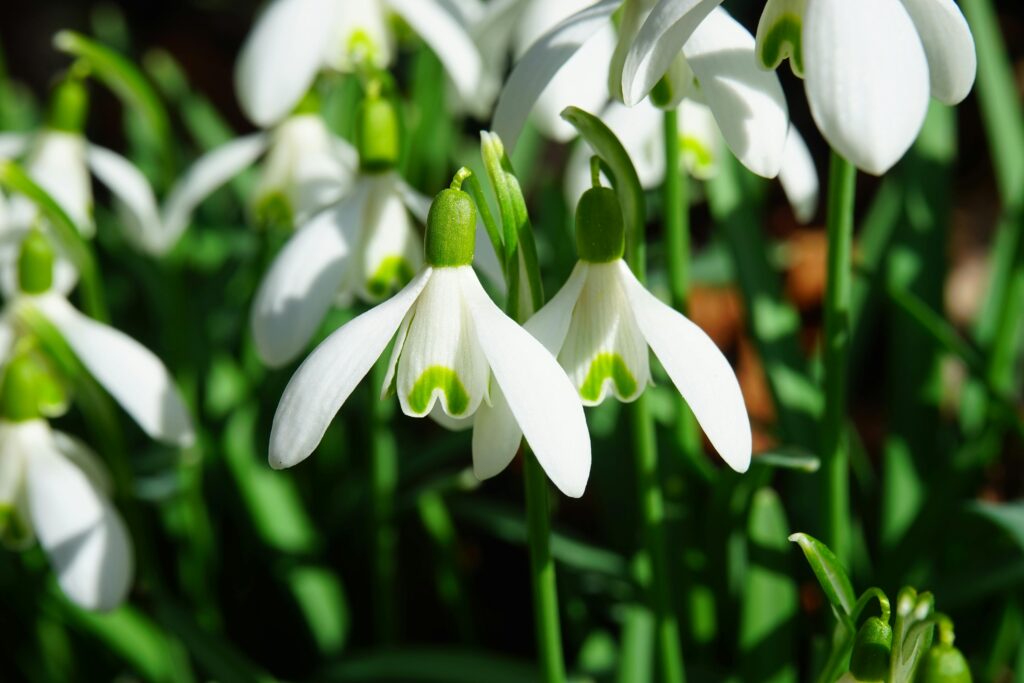
Snowdrops are among the first flowers to bloom in spring, but they can also be a valuable addition to shaded areas in autumn, offering a glimpse of what is to come. These delicate, bell-shaped flowers are white with green markings and appear in clusters, brightening up shaded gardens. Snowdrops thrive in cool, moist, well-drained soil, making them perfect for shaded spots under trees or along garden paths. While they bloom in spring, their leaves add subtle texture to shaded areas in the fall.
In the autumn months, Snowdrops’ foliage begins to die back, but their beauty in early spring makes them a much-anticipated garden addition. These flowers are low-maintenance, requiring minimal care once established. Snowdrops are perfect for planting in groups, where they can naturalize and return year after year. They are a reliable and charming option for gardeners looking to brighten shaded areas as the seasons change.
Creeping Jenny (Lysimachia nummularia)
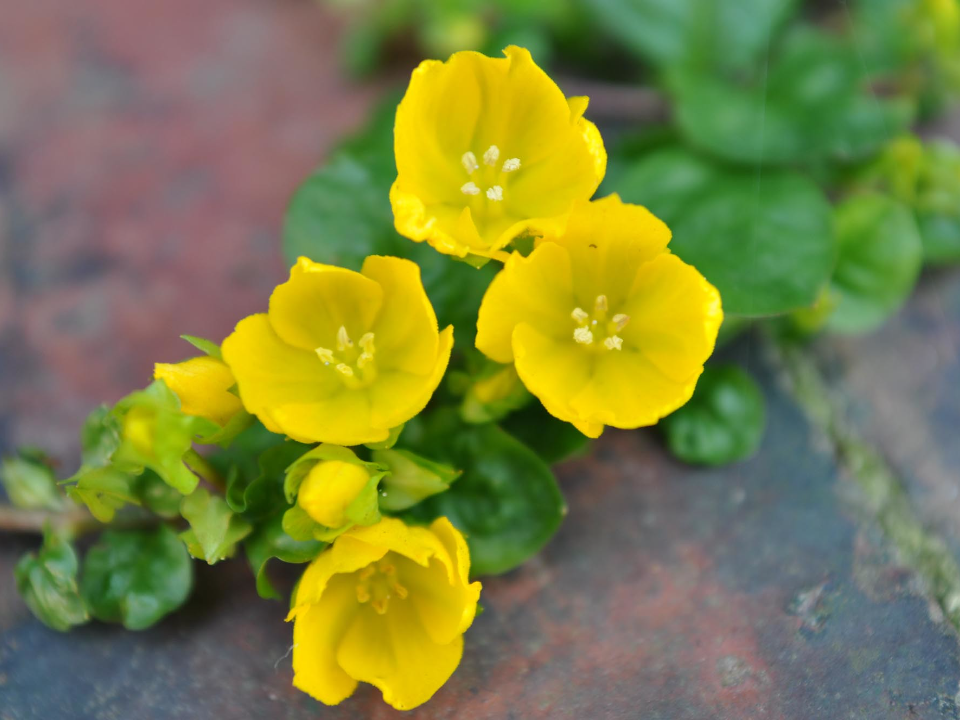
Creeping Jenny is a popular shade-loving ground cover plant known for its vibrant green or golden leaves. It spreads quickly, making it ideal for covering large areas of the garden that are shaded or partially shaded. Creeping Jenny thrives in moist, well-drained soil and is a low-maintenance option for filling in gaps in shaded corners. Its bright foliage provides a striking contrast to darker shaded spots and pairs well with other shade-loving plants.
During the autumn, Creeping Jenny’s leaves take on a deeper golden or orange hue, adding seasonal color to your garden. This plant is also known for its ability to tolerate a variety of soil types and moisture levels, making it adaptable to different growing conditions. Creeping Jenny is perfect for planting in hanging baskets, containers, or as ground cover. It is a versatile, fast-growing plant that requires little care beyond occasional trimming to keep it in check.
This article originally appeared on Avocadu.
